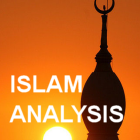De nombreuses entreprises sociales sont engagées dans des démarches d’innovation. Pour apporter des réponses nouvelles aux besoins sociaux, elles prennent des risques, mènent des activités de R&D, s’entourent d’experts et de chercheurs, expérimentent.
Cependant, elles rencontrent des difficultés pour financer et accompagner leurs innovations. D’un côté, les financeurs traditionnels de l’ESS fonctionnent selon des mécanismes peu adaptés à la prise en charge du risque lié à l’innovation, et n’ont parfois pas la taille critique nécessaire à la mobilisation des capitaux importants que requièrent certaines innovations sociales. De l’autre, les financeurs classiques de l’innovation, aujourd’hui massivement focalisés sur l’innovation technologique, ont du mal à appréhender les particularités de l’innovation sociale, telles que la rentabilité limitée, le recours aux sciences humaines, le statut associatif ou coopératif de nombreuses structures.
C’est pourquoi le Mouves s’est engagé depuis février dans l’animation d’un groupe de travail pluridisciplinaire, réunissant une vingtaine d’acteurs autour d’un objectif commun : mieux accompagner et financer l’innovation sociale, pour accélérer son développement. Cet objectif se décline en deux volets d’action : mettre en place des outils spécifiques pour accompagner et financer l’innovation sociale, mais aussi ouvrir les aides classiques à l’innovation.
Parmi les acteurs impliqués dans le groupe de travail : acteurs de l’ESS (Avise, France Active, URSCOP Languedoc-Roussillon…), acteurs de l’innovation (Centre francilien de l’innovation, Liens…), acteurs publics (Région Ile-de-France…), chercheurs (ESSEC, UPEC, Institut Godin…)
Pour convaincre l’ensemble des organismes d’aide et de financement de soutenir l’innovation sociale, encore faut-il définir, concrètement et simplement, ce qu’est un projet « socialement innovant ». C’est pourquoi la première étape de notre travail collectif a consisté à mieux caractériser l’innovation sociale : comment repérer, sélectionner, diagnostiquer, accompagner, des projets socialement innovants ?
Samedi 18 juin, les Etats généraux de l’ESS au Palais Brongniart ont été l’occasion de mettre en débat le premier résultat d’étape de ce travail : un outil simple et opérationnel, utile pour les acteurs de terrain, appropriable par le plus grand nombre d’acteurs dans et hors de l’ESS.

Cet outil se décline en 8 critères socles, sur lesquels l’ensemble des acteurs consultés se sont mis d’accord comme constituant le cœur de la caractérisation de l’innovation sociale, et en 12 critères complémentaires.
Cet outil de base qui pourra être personnalisé par les différents acteurs en fonction de leurs usages : choix des critères complémentaires retenus, importance relative accordée à chaque critère, choix de la méthode d’évaluation… Il vise ainsi à fournir une base commune à tous les acteurs de l’innovation sociale, tout en s’adaptant à la diversité de leurs besoins : entrepreneur souhaitant diagnostiquer son projet pour repérer des pistes d’amélioration, organisme cherchant à sélectionner des projets innovants pour les financer, incubateur proposant d’accompagner des projets dans leur développement, organisateur d’un concours souhaitant repérer des projets pour les mettre en valeur, etc.
Deux enjeux aujourd’hui :
- Tester et roder cette grille : auprès d’entrepreneurs sociaux innovants, auprès d’acteurs de l’innovation classique, et au-delà des entrepreneurs sociaux auprès d’autres acteurs engagés dans des démarches d’innovation sociale (monde associatif, entreprises classiques…).
- S’appuyer sur cette grille pour créer ou développer des outils pertinents de financement et d’accompagnement pour l’innovation sociale ! Parmi les outils spécifiques d’aide à l’innovation sociale, France Active, membre du groupe de travail, a annoncé à l’occasion de l’atelier du 18 juin le lancement d’INNOV’ESS, un fonds de financement dédié à l’innovation sociale et doté de 2 millions d’euros pour sa première année. Parmi les outils classiques d’aide à l’innovation, le Mouves et ses partenaires s’engagent depuis plusieurs mois pour l’ouverture du Crédit d’impôt recherche et celle des aides Oséo Innovation aux projets socialement innovants.

